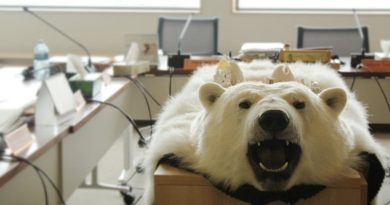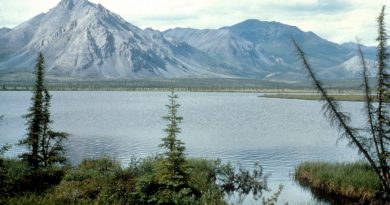Blog: Arctic SOS to Climate COP26 – urgent action needed to avert weather catastrophe
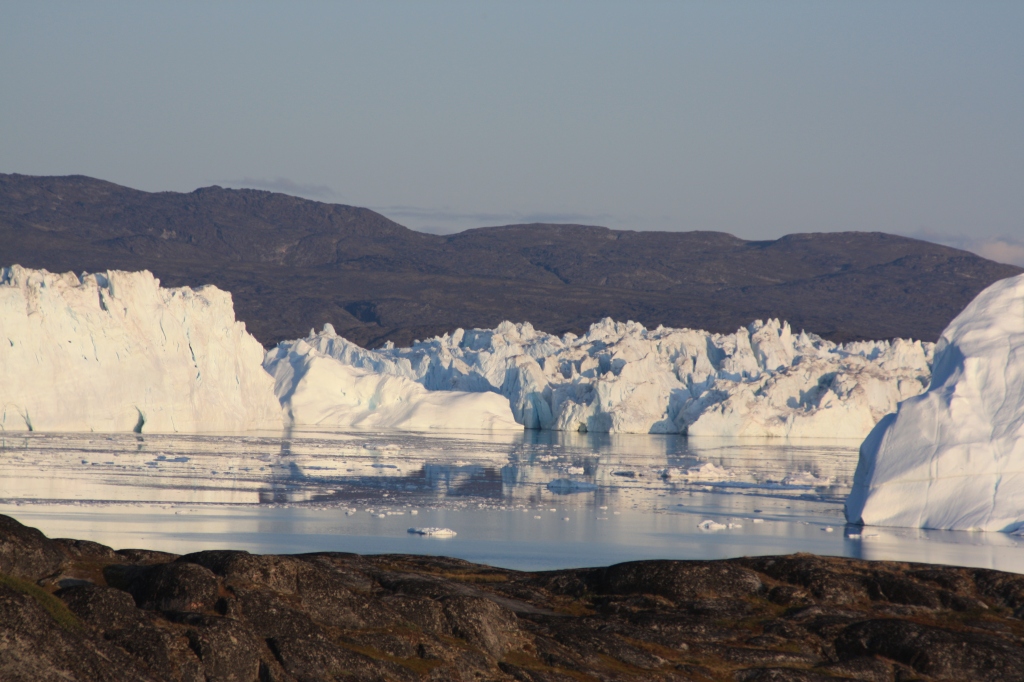
With the final countdown running for the UN climate conference, COP26, in Glasgow, the mood is shifting between desperate hope for a breakthrough that will ensure the world can keep global warming below the critical 1.5 C mark – and fear that countries will not pledge the necessary reductions.
This week top scientists working on the Greenland ice sheet and Arctic climate change issued an urgent message. The ice sheets in Greenland and Antarctica are melting faster than ever, with catastrophic implications for global sea level and the world’s weather – and only rapid and substantial action can slow the pace.
It’s an experience I will never forget, sitting by the fjord in Ilulissat, western Greenland, watching iceberg after iceberg drift down from the mighty inland ice sheet, floating into the sea, creating an ever-shifting panorama of bizarre shapes, changing colour in the summer Arctic light, from spectacular blue through shimmering silvery greys to shades of orange and pink in the light Arctic night. From a boat at the glacier front, I can hear the fizzing and crackling of a sea of ice chunks and fragments, the bang like a thunderclap when the glacier calves, releasing giant chunks of ice to the sea below and sending powdery clouds of icing-sugar snow into a blue sky sparkling with tingling ice crystals.
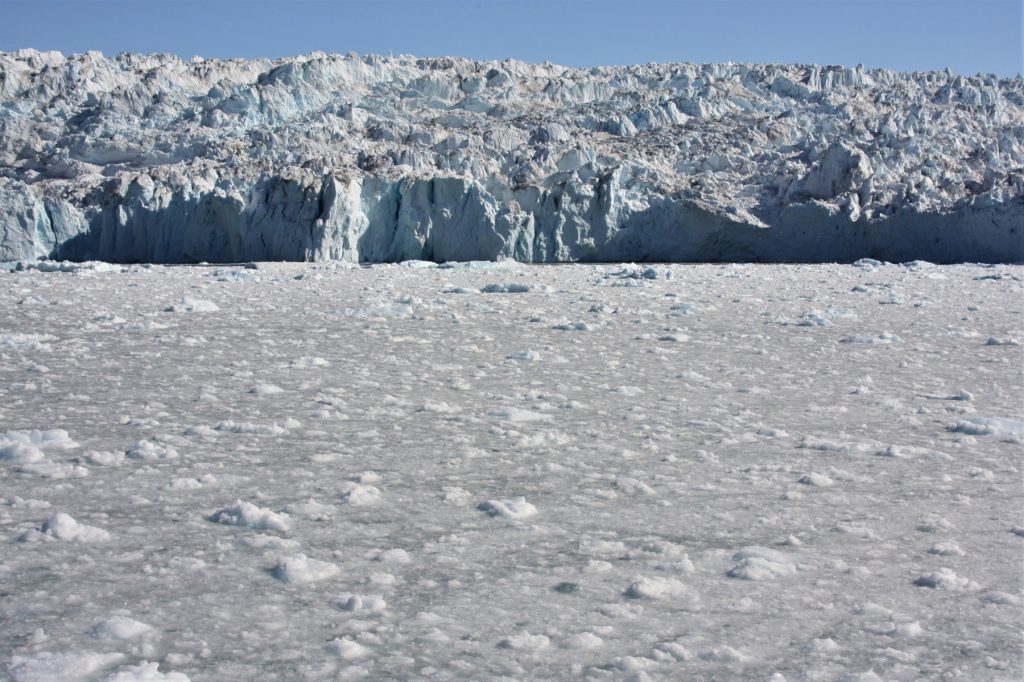
But that beautiful spectacle has a potentially catastrophic background. The Sermeq Kujalleq glacier on the west coast of Greenland is the fastest flowing in the world – and a symbol of the rapidly accelerating climate change that is threatening the world as we know it. Sermeq Kujalleq is what Jason Box from GEUS (The Geological Survey of Denmark and Greenland) describes as Greenland’s “mass loss hotspot”. The organisation is active in cryosphere monitoring, especially the massive Greenland ice sheet, which covers 1.7 million square kilometres of ice. The ice loss is accelerating, not only here, but from all ice areas worldwide, confirms Box’s colleague at GEUS, Andreas Ahlstrom.
When a popping cork is no cause for celebration
With the Glasgow conference approaching fast, the GEUS experts and two colleagues from DMI (Danish Meteorological Institute), briefed journalists on recent research results at the International Press Centre (IPC) in Denmark on 14 October 2021 and directed an urgent appeal to the negotiators for swift and substantial climate action .
“As we go towards COP26, the monitoring we are conducting has even more meaning because it shows a really strong response of the cryosphere, the frozen part of our planet, to this enhanced greenhouse effect”, Box stated.
He told journalists he and his colleagues had just observed that the giant Sermeq Kujalleq glacier, the portal where most ice discharges from the Greenland icesheet into the ocean, has more than doubled its discharge. Like a cork on a sparkling wine bottle popping, Box says. But there’s no cause for celebration. There are now 50 gigatonnes of ice coming out of this outlet per year, that’s 50 cubic kilometres of water – 100 years of Los Angeles drinking water supply, Box explains. After the respite given by a few cold years, – part of the natural variation that cannot detract from the overall warming trend – the glacier has now more or less retreated back to its previous record minimum, reached in August 2015. Six years on, Box says, we are there again and the massive glacier is “spraying like a fire hose“. As well as rising surface temperatures, warming water appears to be a major factor, the scientist explains. And the consequences are being felt around the world in the form of rising sea level.
The rate of sea level contribution from the loss of Arctic land ice has increased for all regions in each successive decade since the 1970s.
This summer, rain fell on the highest point in Greenland, where precipitation normally falls only as snow. Box and his colleagues monitored three rainfall episodes this year since they installed gauges which they check against computer models. They observed the largest rainflow on Greenland ever measured or estimated.
For 3 days this month, 7 billion tonnes of rain fell across Greenland — the largest amount since records began in 1950. It’s also the first time since then that rain, not snow, fell on Greenland’s highest peak.
📚the @ArcticFocus article ⬇️ to learn morehttps://t.co/xDNjluXtIe pic.twitter.com/EuB6oE3AFm
— Arctic Basecamp (@ArcticBasecamp) September 22, 2021
Box describes zero degrees centigrade as “a real tipping point”, when snow turns to rain, darkening the surface, heating up the snow and contributing to the Arctic warming three times faster than the global average. And it is being crossed increasingly frequently, he says.
Greenland’s long climate record
Back in 1990, Swiss scientist Konrad Steffen set up “Swiss camp”, a measuring network on the Greenland ice sheet. “Koni”, as he was known, tragically died at the camp last year when he fell into a water-filled crevasse. Box and his colleagues, carrying on his work, have installed new technology at the site, carrying on the climate record. Since 1990, it shows a 1.7 C temperature rise during summer and annual temperatures increasing by 2 degrees C – in just 30 years.
Other records including ice cores and DMI instrumental records go back to the 1840s.
They show that the ice sheet was stable until 1900.Then came a switch, when it started to lose mass. The only exception occurred in the 1970s, possibly because increased sulphur content in the atmosphere shaded the glacier. From then on, warming dominates, caused by what Box describes as “enhanced greenhouse effect”.
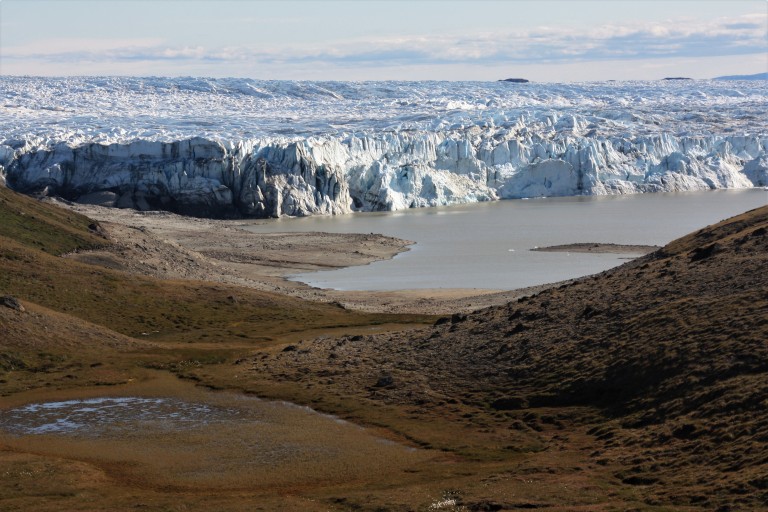
Martin Stendel is a climate scientist at the Danish Meterological Institute (DMI), which runs climate and weather forecasting models, and uses measuring data from GEUS and satellite observations to corroborate and improve them.
See Polar Portal
The experts seek to measure the difference between the amount of snowfall and the amount of snowmelt and runoff from the ice sheet, the “surface mass balance”. Greenland has been losing more ice each year than it gains since the late 1990s, Stendel says. This is confirmed by satellite observation and ice surface models.
There is “huge inter-annual variability”, he notes. In 2018, it was actually colder than normal. But that doesn’t mean there is no climate change. The GRACE satellites measure gravity changes caused by mass changes, corroborating the results of the models. Their records from 2002 to 2020 show that the” total ice budget”, the mass balance is decreasing more every year than the year before. It confirms the loss of 4.200 gigatonnes or cubic kilometres of ice during just 18 years.
Rising seas from the Arctic to the Tropics
Thermal expansion used to be the biggest contributor to sea level rise, explains Stendel’s DMI colleague Ruth Mottram. Warming water expands. But melting land ice has already taken over. This will continue in future, she says. An average half metre sea rise is to come from the melting of small glaciers alone. When, depends strongly on which emissions pathway our governments choose to follow. Most smaller glaciers will be gone by end of century on a high emissions pathway, including most alpine glaciers. Africa’s only three glaciers are likely to disappear by 2040.
The Danish capital, Copenhagen, is 1000 years old, says Box. Now, within just 100 to 200 years, it could experience several metres of sea level rise.
Sea level rise will not be evenly distributed around the world, Mottram reminds us. Some people will get more, some less depending on the location. And although the global North has caused it, tropical sea level rise will be 30-40 percent higher, says Box. Once again, the global south will suffer more from the climate change caused by the industrialised countries.
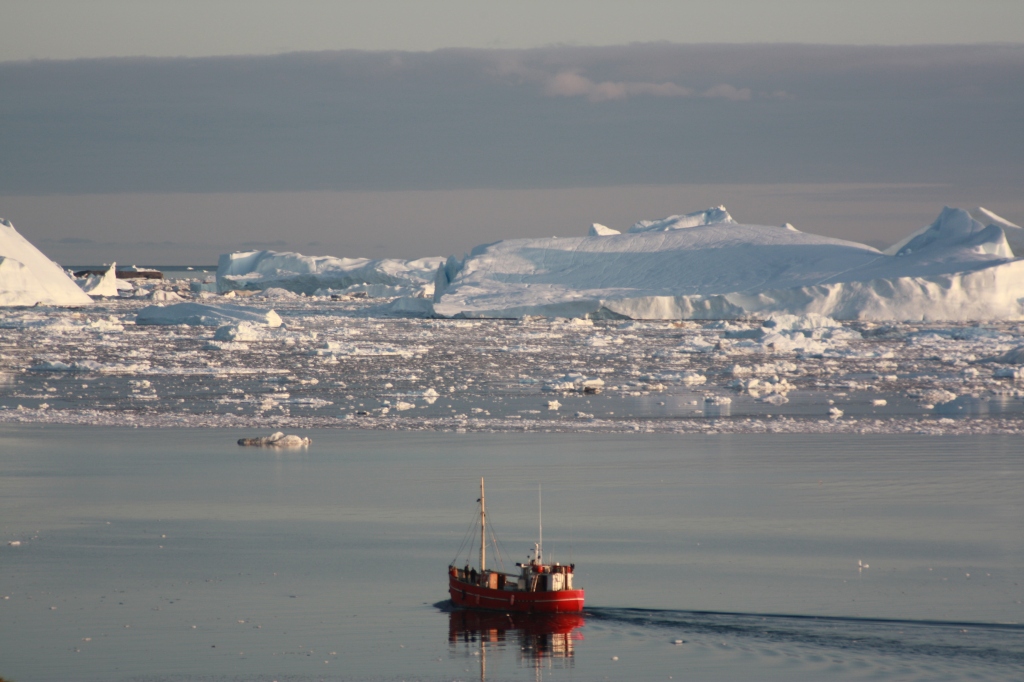
For the moment, the Greenland ice sheet is contributing the highest amount to sea level rise. But that will change, the scientists tell us. And that is not good news. The rate of melt in Antarctica has become higher in recent decades. It is set to take over as the biggest contributor. And Antarctica has nine times the volume of the Greenland ice, Box adds.
The time scale is difficult to predict, as there are still too many unknown quantities. The scientists stress that sea level could be much higher than so far calculated, with disastrous effects for cities around the world. Ice sheet models are not capable of reproducing the observed changes, Box adds. We can’t rule out multiple metres by the end of the century. At least one metre is “already in the pipeline”.
The latest IPCC reports show that Greenland’s glaciers don’t all act the same way. Some retreat substantially more than others. There is still much we do not know about the workings of our planet. Exactly how the ocean contributes to changes to the glaciers is very uncertain, Mottram says. In spite of huge advances in recent decades, we do not have enough data from the ocean. She expects much progress in the next five years.
Factor sea ice
Sea ice is another key factor in climate change in the Arctic – with implications for the rest of the globe.
Unlike the melting of land ice, it does not contribute to sea level rise, but to overall warming. The white ice reflects heat from the sun back into space, helping to cool the earth, known as the albedo effect. The Arctic sea ice is becoming thinner and breaks up earlier in the year, even in “safe” far northern regions. The darker ice-free water holds more heat.

Mottram describes a collaboration project with local hunters who take the scientists out onto the sea ice to monitor it and the water below. Sea ice is very important to them for hunting and fishing. It provides a key habitat for polar bears, walruses and other species.
Even northern Greenland’s “last ice” has started to open up more frequently, because of the thinning, the demise of older, multi-year ice, and changes in wind patterns. There are a lot of processes to understand. Although this year’s sea ice minimum was high compared to 2000, it was still very low compared to 1990, Mottram explains. In one place she monitored this summer, the sea ice was only 90 cm thick, whereas it was two metres in the 1960s. Thinner ice is much more vulnerable to storms. In February this year, a big storm blew sea ice out into Baffin Bay. For the first time, Mottram and her colleagues saw melt ponds on sea ice. There are very big changes coming up, she predicts.
Scientists discover large rift in the Arctic’s last bastion of thick sea ice https://t.co/h4CwZD9E18 via @physorg_com
— Circumpolar Studies (@CircumpolarInfo) October 16, 2021
Extreme weather events originate in the Arctic
The Arctic is warming three times faster than the planet as a whole. And rising sea level is not the only worrying consequence. The changes are making the jetstream slower and wavier, Box explains. And that is a key influence on our weather and has an impact on big populations outside the Arctic. Extended periods of dry, wet or cold conditions, extreme heatwaves such as those experienced in the Pacific North-West of the USA, record-shattering temperatures of more than 40C even in Europe – these extreme weather events seem to have their origin in the Arctic.
Martin Stendel from DMI refers to “omega” blocks – they look like the Greek letter – a natural part of circulation, which seem to be occurring more frequently and staying longer, as in the USA and Canada this year. The “feet” of the omega are cold, the middle is warm. In the border area between the two, unstable conditions can reign. The Danish expert refers specifically to the catastrophic flooding in Germany this year, which I discussed in an earlier post. The same explanation can apply to heat, drought or floods, he says.
Andreas Ahlstrom from GEUS draws attention to the higher frequency of storm surges. These extremes will cause more frequent and earlier disruption than slow sea level change, he warns. This means more frequent flooding, especially in coastal areas.
Extreme precipitation will also happen more often. Denmark, for example, will thus get a rising groundwater level, to add to the problem of a rising sea level.
“The key message”, the GEUS expert concludes, “ is that we’re moving away from a more predictable climate to something which may vary quite dramatically from season to season in a less predictable way. Traditionally, in human history, stability is a key to our success as a species. So we will have difficulty in adjusting to a very variable climate.”
Ruth Mottram brings in the ongoing debate over the impact meltwater from Greenland is having – and will have – on ocean currents. These, in turn, have a major influence on the climate.

More to come
The DMI runs and compares a wide range of weather and climate models. Their latest simulations show much more warming in the future in the Arctic in particular, although there will also be more snowfall. Overall, melt “wins”, as Mottram puts it. Models of very high scenarios showed the Greenland ice could be gone in a thousand years, she adds. Other scenarios give it much longer. “We don’t know the time scale.”
The ice sheet melt is only just beginning to accelerate, says Jason Box.
The experts have observed increasing warming in northern Greenland and forecast big changes in the next decade. The north is “just waking up”, says Box. As sea ice is lost from northern Greenland, reinforcing strong warming, glaciers which are currently moving more slowly are likely to speed up and deliver much more ice into the sea.
Can COP26 save the ice?
With the Glasgow climate summit just around the corner, the scientists have a sobering key message: Even if the Paris goals are achieved, ice sheets will still contribute an increasing amount to global sea level. Box speaks of a “catastrophe unfolding”. At the most productive glacier in Greenland, even if the two-degree target could be reached, “we would expect at least 5 degrees of summer warming”.
So does that mean there is no point in reducing emissions? That is certainly not what these scientists are saying. The Glasgow COP has a huge role to play. Keeping to a lower Paris agreement pathway could preserve a lot of the world’s ice, they insist.
The amount by which the world reduces greenhouse gas emissions has huge implications for how much the ice sheet will lose.
“It’s not a message that it’s too late. The more the carbon emissions are limited, the slower the ice will be lost, so we are effectively applying brakes to the system – and that’s buying time.”, said Box.
Research shows the ice sheet is very sensitive to which climate pathway is followed, Mottram explains. The lower emissions, the lower the warming in the Arctic and the lower the melt we will see.
“Keeping the warming to the Paris Agreement can really make a difference.”
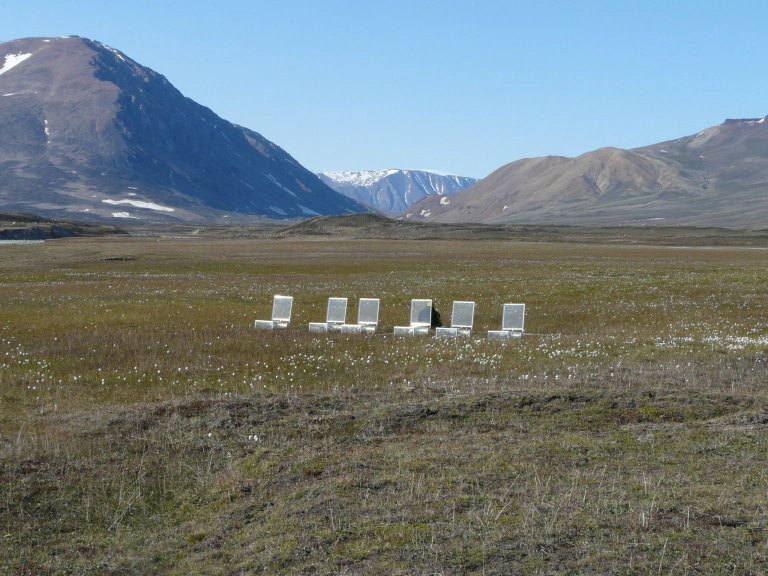
The problem, Box acknowledges, is that policy decisions need to be made, whose benefits will only be felt decades from now. For politicians who govern in short political cycles, that means opting for measures potentially unpopular with their voters, in the interests of future generations. He is calling for a lot of pressure at COP26 for the legal enforcement of climate treaties in future.
Ruth Mottram says she has more hope than she had at COP15. The 1.5 to 2 degree goal was established partly because studies indicated this would help keep the Greenland ice sheet stable and a large chunk of it intact. Although the present emissions pledges on the table are still insufficient, the situation is better than back then, when the world was headed for a rise of 4 to 5. 5 degrees C. Still, she adds, “Personally I would like to see a little more progress“.
Time to tamper with the workings?
Martin Stendel puts it in a nutshell: “We need to stop emitting any gases into the atmosphere as quickly as possible, maybe even remove greenhouse gases from the atmosphere. Otherwise we will not be able to reach these aims“.
Box also tackles the controversial but unavoidable topic. There is far too much CO2 in the atmosphere. “So societies need to contemplate how they are going to remove about 500 gigatonnes of carbon from the atmosphere.” The world faces sea level rise of more than 10 metres at this level of CO2 in the atmosphere, Box adds, and poses the question: Is there a future for geoengineering? We come back to the figures which showed a reduction of ice melt in the 1970s, possibly because of the role of sulphurs and aerosols in the atmosphere shading the ground and influencing melt. Can we reproduce that?
I asked the Greenland expert whether he would favour some form of geoengineering. His reply is sobering, to say the least:
“We’re so late and the consequences are so high, I sense that humanity is forced to embark on solar radiation management (SRM), for example stratospheric aerosol injection (SRI). And it has its proponents; I imagine the US military and others are keen for a variety of reasons. The scale and speed for SAI is not out of reach, neither is the cost. However, we don’t want to get hooked on SAI because if we did and stopped abruptly, there could be drastic effects and SAI masks the root problem. Still, we’re too far down the elevated CO2 track to ignore options.”
We also need to develop affordable and scalable approaches to draw carbon down from the atmosphere, Box told me.
See also: When the rain falls on Greenland … only negative emissions can cool the Arctic – and the planet
What the guests bring to the Glasgow table
So where do we stand, as the world gears up for the conference some have touted as the last chance to keep the 1.5C goal alive?
The UN has stressed that the pledges on the table for Glasgow so far, the “ndcs” (nationally determined contributions) fall well short of what we need.
“The NDC Synthesis report indicates that while there is a clear trend that greenhouse gas emissions are being reduced over time, nations must urgently redouble their climate efforts if they are to prevent global temperature increases beyond the Paris Agreement’s goal of well below 2C – ideally 1.5C – by the end of the century.“
The UN refers to “some worrying findings”:
“The available NDCs of all 191 Parties taken together imply a sizable increase in global GHG emissions in 2030 compared to 2010, of about 16%. According to the latest IPCC findings, such an increase, unless actions are taken immediately, may lead to a temperature rise of about 2.7C by the end of the century.“
UN climate chief Patrizia Espinosa stressed that the 16% increase was “a huge cause of concern” and “in sharp contrast with the calls by science for rapid, sustained and large-scale emission reductions to prevent the most severe climate consequences and suffering, especially of the most vulnerable, throughout the world”.
Vague plans not enough
There is still time for more countries to submit their pledges or up their ambition. However, a report leaked this week by Greenpeace and the BBC shows that countries like Saudi Arabia, Australia and Japan are actually lobbying for weaker resolutions.
There is widespread agreement that vague plans for “carbon neutrality” by 2050 are not enough to avoid dangerous climate change. Substantial reductions must be achieved by 2030. A detailed comparison of climate models and national pledges published in the journal Nature Climate Change last month found that emissions in 2030 are set to be almost the same as today — almost double what is needed to be on target for net zero.
If pledges for 2030 so far submitted for Glasgow were implemented in full, they would limit the rise to 2.4 degrees, at best, the paper finds. And even if there were a systematic advance toward net zero, it would deliver only a 50-50 chance of keeping warming to below 2 degrees, according to one method used in the study.
“The good news is that the 2050 net-zero targets for the first time put the ‘well below’ 2 degrees and 1.5 limits of the Paris Agreement within reach,” the study’s chief author, Niklas Hohne of the NewClimate Institute in Cologne, Germany, told Yale Environment 360.
“But the bad news is that no single country is on target to implement the short-term 2030 policies needed to be on track to meet their own net-zero targets.”
If, however, all G20 countries set bold 2030 emission reduction targets and reach net-zero emissions by 2050, the 1.5 C goal could remain within reach.
Greenland’s ice
All things considered, that would be the best news for the Arctic.
The International Cryosphere Climate Initiative (ICCI) will publish the first “State of the Global Cryosphere” report in Glasgow in a few days’ time. ICCI is coordinating a dedicated “Cryosphere Pavillion” at the COP, focusing attention on the need for ambitious 2030 pledges to ensure the implementation of the Paris Agreement, specifically to prevent cryosphere collapse and irreversible feedbacks.
As Greenland guru Jason box put it, “Even a successful Paris accord won’t save most of Greenland’s ice, but it can slow down the loss rate, which is worthwhile.”
Related stories from around the North:
Canada: How floor repair of ‘igloo church’ in Arctic Canada could offer deeper look into North’s permafrost, CBC News
Greenland: Oldest Arctic sea ice vanishes twice as fast as rest of region, study shows, Eye on the Arctic
Norway: Thawing permafrost melts ground under homes and around Global Seed Vault in Svalbard, The Independent Barents Observer
Russia: Putin voices concern about melting permafrost, but doubts it’s caused by humans, The Independent Barents Observer
United States: Bering Sea ice at lowest extent in at least 5,500 years, study says, Alaska Public Media

